Between the high and low tide lines on our rocky coastal beaches you can find a wide variety of marine life. In the rocky intertidal zone, low tides expose the tidepools, giving us a view into this fascinating ecosystem. Most people are familiar with larger charismatic species such as sea stars, sea urchins, crabs, and snails. However there are many more species that go unnoticed or misidentified in the tidepools. This blog post explores three of these lesser known invertebrate species that you may spot on a day out tidepooling along the Central Coast.
Tunicates
Tunicates are a marine invertebrate (creatures without a backbone) with about 3,000 species found all over the globe. The name tunicate refers to their tunic-like, cellulose-rich outer covering that surrounds the body. Adult tunicates have a simple, sac-like body structure with two openings known as siphons. They feed and respirate by pulling water in one siphon and pushing it out the other.
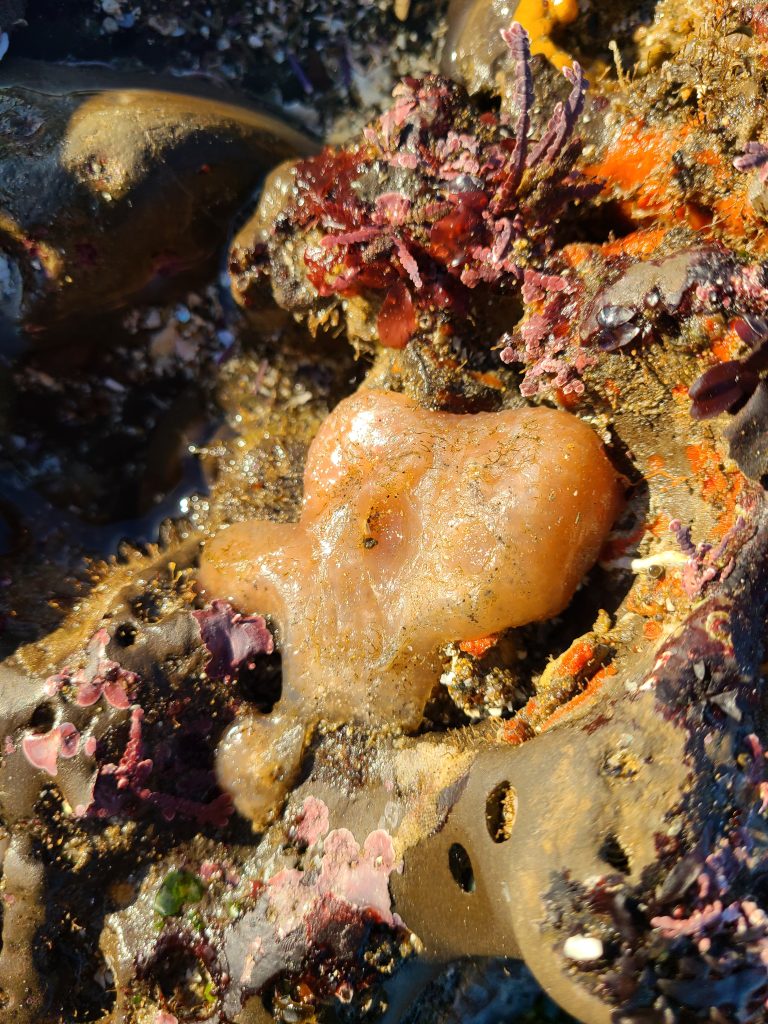
There are three living classes of tunicates, the most well-known being the class Ascidiacea. The species in this class are commonly known as sea squirts, sea tulips, or sea pork. Adult ascidians are sessile (non-moving) and may attach to natural elements such as coral, seaweed, or rocks, or to man-made structures such as boat hulls or dock pilings. Ascidians,commonly seen in rocky tidepools, are often misidentified due to their small size or unusual appearance.
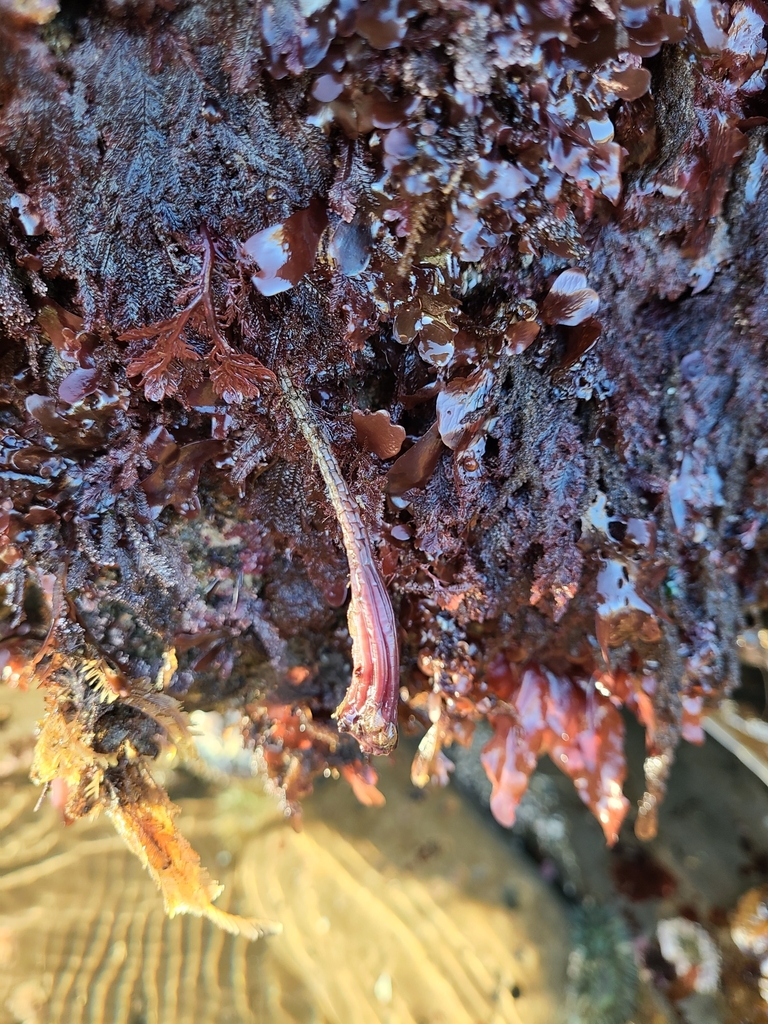
On the SLO County coast, over 40 species of tunicates have been observed and recorded with the iNaturalist app. Some of the most commonly observed tidepool tunicates are the Pacific sea pork (Aplidium californicum), the chain tunicate (Botrylloides violaceus), and the long-stalked sea squirt (Styela montereyensis). Many other tunicates, including free-swimming salps and pyrosomes, have been observed by divers just off the coast or washed up on the beach.
Hydrozoans
Hydrozoans (meaning “water animal” in Greek) are closely related to animals such as jellyfish, sea anemones, and corals. can be solitary or colonial. In colonial species, the individuals are known as polyps, and they are connected through a tube-like structure called a hydrocaulus that allows them to share nutrients.
Although there are about 3,800 known species of hydrozoans worldwide, there are only a few commonly found in and around the Morro Bay area. The ostrich plume hydroid (Aglaophenia sp.) is commonly seen in local tidepools. Due to its brown coloration, branched body, and large size, it is commonly mistaken for algae or kelp.
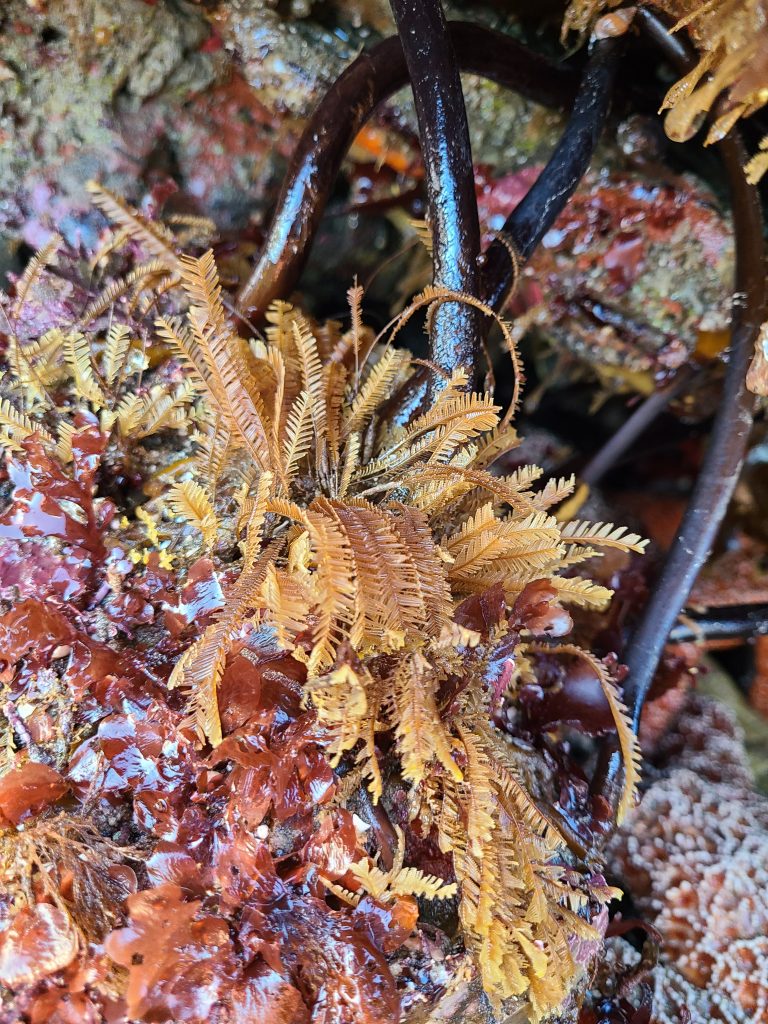
Although not a tidepool creature, another common hydrozoan on the Central Coast is the by-the-wind sailor (Velella velella). Despite its resemblance to a jellyfish, it is actually a colonial hydrozoan made up of many individual polyps. We typically see them in the springtime when winds push the colonies onto beaches, causing mass strandings.
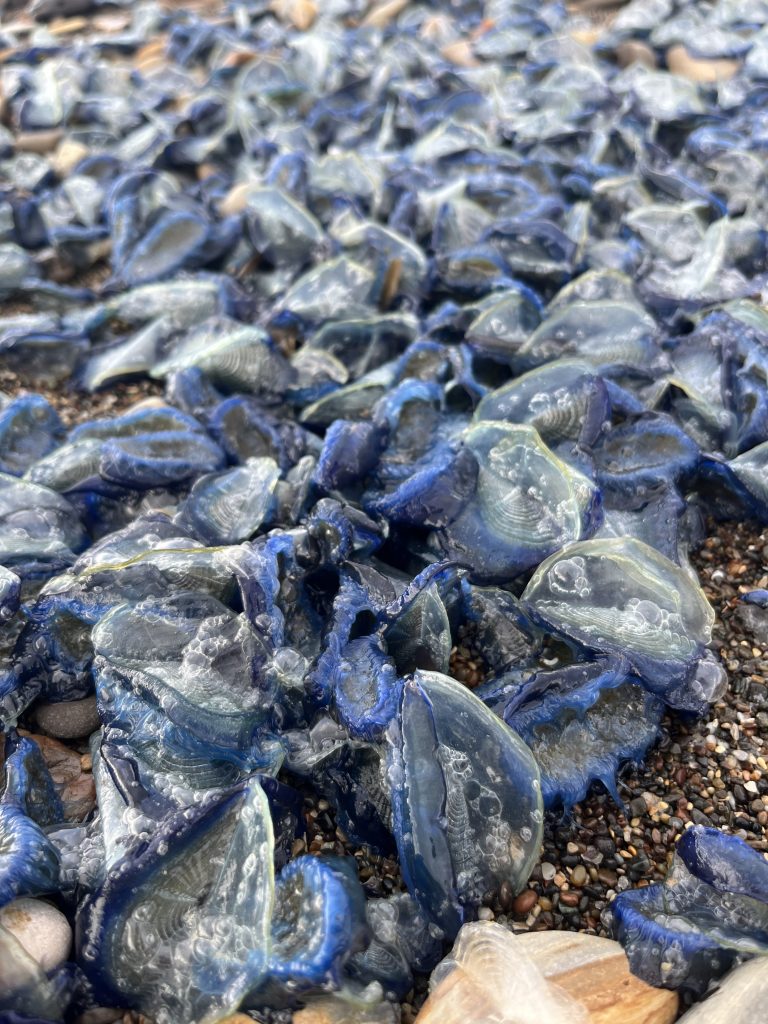
Bryozoans
Bryozoans (meaning “moss animal” in Greek) can come in a variety of shapes ranging from white single-layer encrusting sheets a few centimeters wide to a brown kelp-like shape several inches long. Today there are about 5,800 species of bryozoans worldwide, but looking at the fossil record, about 15,000 more species existed going back to at least 480 million years ago. Bryozoan species can be found in salt water, fresh water, and brackish water.
Bryozoans are distinguished by their lophophore, a “crown” of tentacles around the mouth that aids in filter feeding. Most bryozoans exist as colonies, although a few are solitary. A bryozoan colony is made up of individuals known as “zooids.” Each colony has specialized zooids known as autozooids which serve functions such as feeding, excretion, and nutrient distribution.
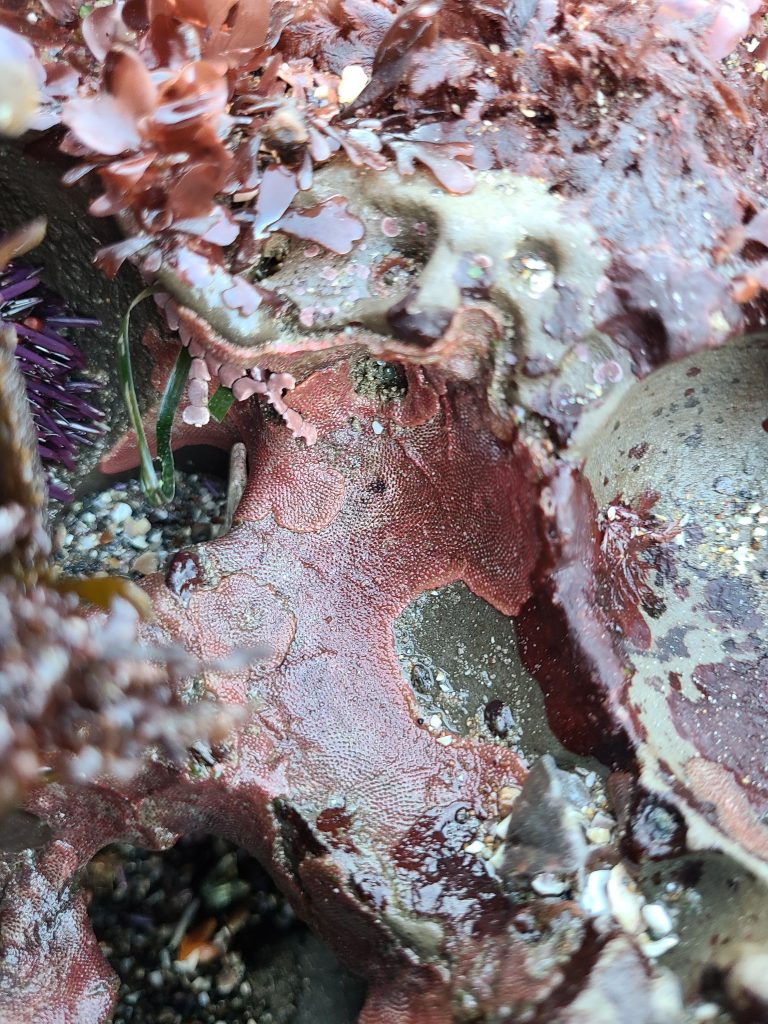
Species Identification
Tidepool species can be difficult to identify, especially given the wide diversity of marine life you might encounter. Apps such as Seek or iNaturalist can be useful when trying to identify species. iNaturalist is a community science-based app where users upload geotagged photos of wildlife. The app then provides its best guess of a species identification based on the photo and location. Once the identification has been confirmed by another user, it is considered “research grade” and can be used by scientists around the globe. By using this app, you are not only learning more about local species but you are also contributing to biodiversity databases and research around the world.
References
https://www.digitalatlasofancientlife.org/learn/bryozoa/
https://www.montereybayaquarium.org/animals/animals-a-to-z/bryozoan
https://www.marinespecies.org/hydrozoa/
https://www.centralcoastbiodiversity.org/ostrich-plume-hydroid-bull-aglaophenia-sp.html
https://inverts.wallawalla.edu/Cnidaria/Class-Hydrozoa/HydroidPolyps/Aglaophenia_sp.html
https://www.britannica.com/animal/tunicate
https://ocean.si.edu/ocean-life/invertebrates/tunicates-not-so-spineless-invertebrates
Help us protect and restore the Morro Bay estuary!
- Donate to the Estuary Program today and support our work in the field, the lab, and beyond.
The Estuary Program is a 501(c)3 nonprofit. We depend on funding from grants and generous donors to continue our work. - Support us by purchasing estuary-themed gear from ESTERO. This locally owned and operated company donates 20% of proceeds from its Estuary clothing line and 100% of Estuary decal proceeds to the Estuary Program. Thank you, ESTERO!
- Purchase items from the Estuary Program’s store on Zazzle. Zazzle prints and ships your items, and the Estuary Program receives 10% of the proceeds.
- Subscribe to our seasonal newsletter: Between the Tides!
- We want to hear from you! Please take a few minutes to fill out this short survey about what type of events you’d like to see from the Estuary Program. We appreciate your input!